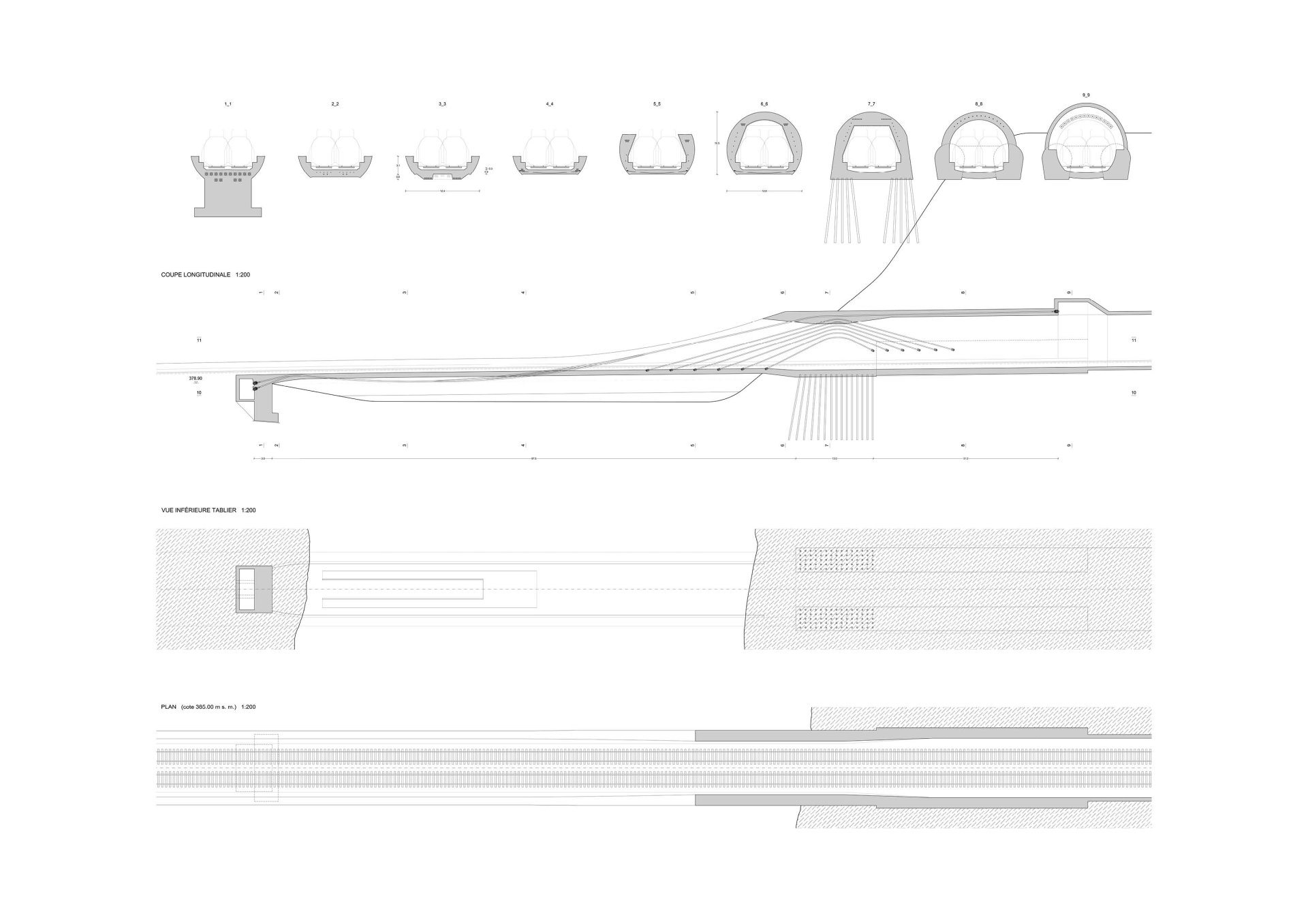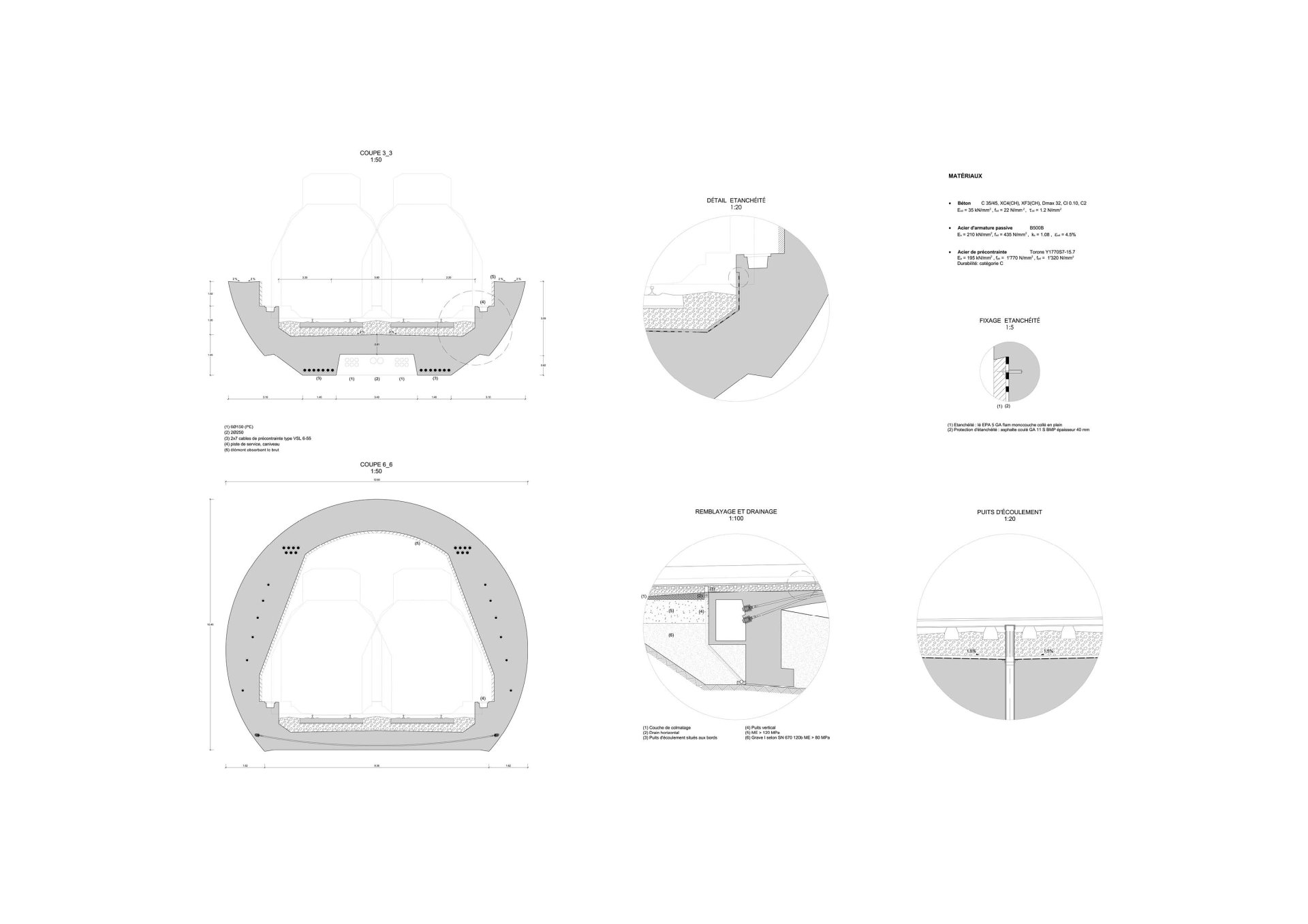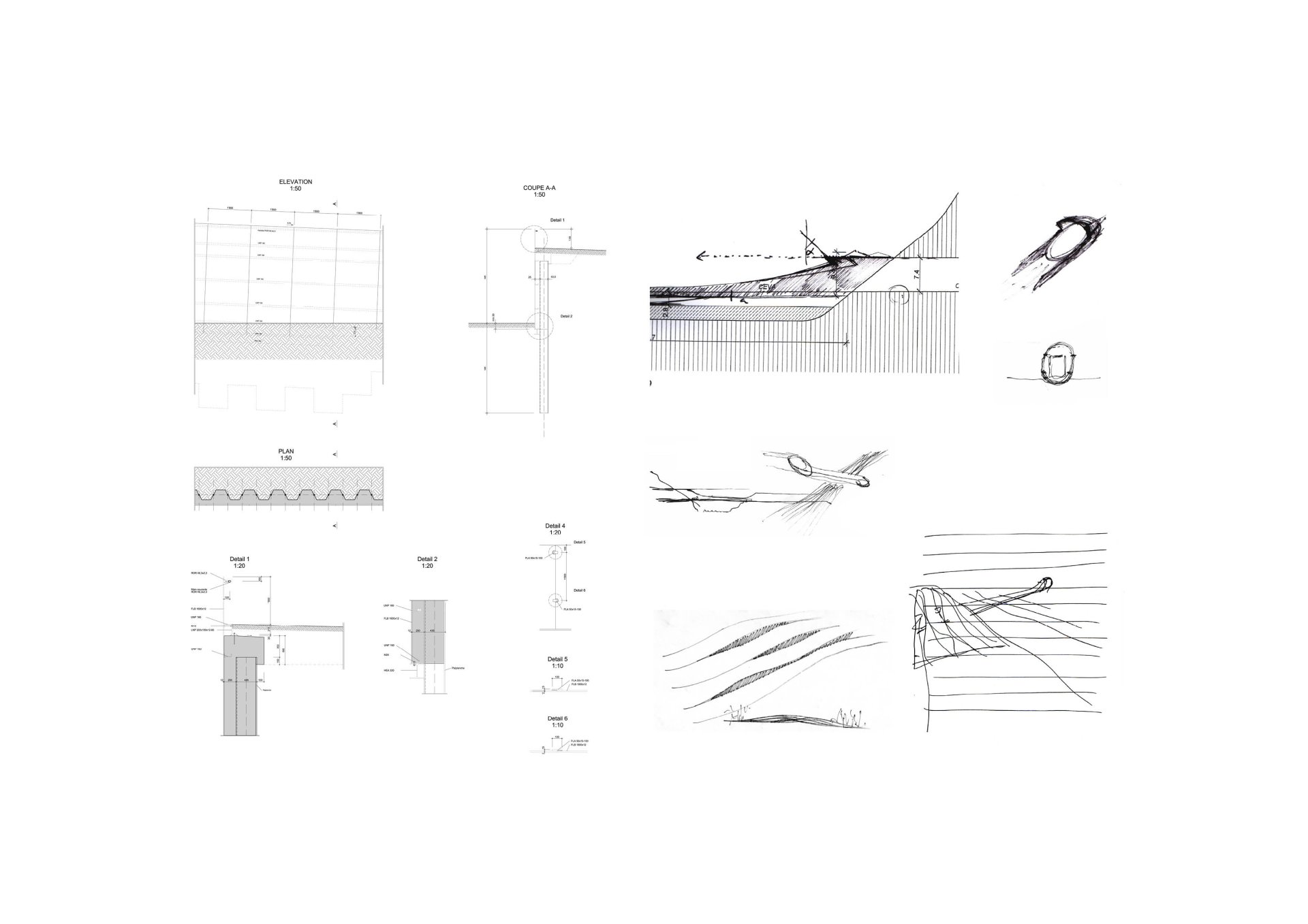PONT CEVA Concrete vision
Carouge





PONT CEVA Concrete visionCarouge CFF infrastructures
Concours
« L'architecture est l'art de construire des lieux de telle façon qu'ils permettent l'émergence de liens : sans lieux, pas de liens possibles. »
Marc Augé, Non-Lieux
Édifier un pont.
Un pont au-dessus de l'eau.
S'interroger sur le prolongement ouvert et découvert d'une galerie, sur l'enfouissement, l'émergence, la part visible d'une ligne commencée et achevée plus loin.
Adopter une matière, en déclarer l'évidence constructive et décider de s'y tenir.
Ne pas faire de l'ouvrage une sculpture, mais, dans le registre induit de la nécessité statique, éviter les ruptures formelles pour modifier sans transfigurer, découper sans couper.
Déclencher un processus de transformation et de déformation par la vibration engendrée, pour inscrire le pont dans la continuité bâtie d'un trajet, d’un parcours, d’une liaison.
Admettre le pont dans la mutation obligée du paysage et, par la représentation des effets conjugués de la trajectoire et des mouvements de terre, dépasser les limites de son impact.
Adopter un mode de lecture singulier qui associe vision du passager et regard du promeneur.
Additionner les séquences, moduler les temps de perception, passer du flash à la pose longue, de la vitesse à l'immobilité relative, jouer avec la lumière, rythmer et alterner.
Emprisonner un bruit assourdissant pour le libérer en quelques visions sonores cadrées, choisies, et traduire l’instantané d’une fréquence.
Combiner infrastructure ferroviaire et installation paysagère, faire d’un bouleversement un événement, et profiter de l’opportunité offerte pour proposer une autre pratique de l’espace.
Travailler le sol, établir dans l’exacte définition d’une trame directrice un réseau de voies, un ensemble cohérent de places, de parterres, de lieux protégés, pour continuer un système acceptant contingences techniques et environnement.
Competition
"Architecture is the art of building places in such a way that they allow the emergence of connections: without places, no connections are possible."
Marc Auge, Non-Places
To build a bridge.
A bridge over the water.
To reflect on the open and uncovered extension of a gallery, on the burying, the emergence, the visible part of a line begun and completed further along.
To adopt a material, declare its constructive evidence and decide to stick to it.
Not to make the structure a sculpture, but, within the logic dictated by static necessity, to avoid formal ruptures modifying without transfiguring, cutting without severing.
To trigger a process of transformation and deformation through the vibration generated, in order to inscribe the bridge within the built continuity of a route, a path, a link.
To admit the bridge into the inevitable transformation of the landscape and, through the representation of the combined effects of trajectory and earthworks, to go beyond the limits of its impact.
To adopt a singular way of reading that associates the vision of the passenger and the gaze of the walker.
To add sequences, modulate perception times, shift from a flash to a long exposure, from speed to relative stillness, to play with light, to rhythm and alternate.
To imprison a deafening noise and release it through a few framed, chosen sound visions, capturing the instant of a frequency.
To combine railway infrastructure and landscape installation, to turn a disruption into an event, and to seize the opportunity offered to propose a new way of inhabiting space.
To shape the ground, to establish with the precise definition of a guiding grid a network of paths, a coherent system of squares, flowerbeds, protected spaces, in order to continue a system that accommodates technical and environmental contingencies.